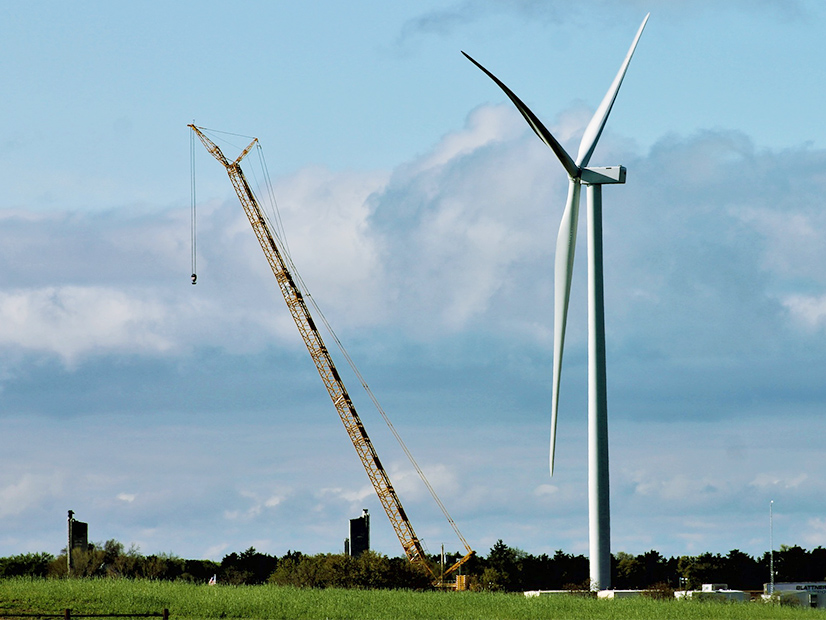Conservative clean energy nonprofit ClearPath last week joined the chorus sounding the alarm over the nation’s congested generator interconnection queues, which it said are throwing a wrench in carbon-reduction goals.
In a new report, “All Queued Up and Nowhere to Go: The Massive Interconnection Challenge Facing Net-Zero Electricity Deployment,” the organization found that increasing queue delays are standing in the way of the clean energy transition, and it released a handful of recommendations aimed at the federal level.
The report concluded that federal agencies should enact policies that include coordinating interconnection and transmission planning processes; allowing expedited treatment for projects proposed in existing rights of way; offering grants and scholarships to electrical engineers who focus on interconnection; and providing technical assistance to those who oversee interconnection processes.
ClearPath analyzed interconnection processes used by transmission providers, utilities and grid operators. It found an average queue wait time of 3.7 years and a “massive backlog, making it incredibly difficult to deploy new generation and storage resources.” It said wait times for interconnection between 2000 and 2010 were just 2.1 years in comparison.
“The interconnection queue has become so dysfunctional that some transmission providers are freezing their process to work through the project backlog,” Spencer Nelson, ClearPath’s managing director for research, said in a press release. “Hundreds of gigawatts of new energy projects — predominantly wind, solar, natural gas, and storage — spend an increasingly long time in the interconnection process. This is now the biggest bottleneck for clean energy development.”
The organization said current net-zero models are “unrealistic” given the current congested queues and warned that the retirement of existing capacity is set to “outpace new additions due to interconnection inefficiencies.”
ClearPath said between 2010 and 2016, only 23% of generation projects entering various queues reached commercial operation. It blamed, in part, first-come, first-served study processes that encourage developers to submit more than one interconnection request in the hopes of landing on the cheapest interconnection points. When speculative placeholders withdraw requests, it causes “turmoil,” the report said.
The nonprofit cited Princeton University’s “Rapid Energy Policy Evaluation and Analysis Toolkit,” which shows that the U.S. requires 1,101 GW of additional wind and solar generation, 179 GW of natural gas generation with carbon capture technology, and 6 GW of nuclear generation by 2035 to reach net-zero emissions by 2050. Using those figures combined with the national average 23% rate of commercial success, ClearPath said 7,000 GW of capacity would need to enter queues to meet Princeton’s 1,300 GW of generation additions.
“Failure to address the current interconnection process at scale will limit the ability to reduce emissions affordably and could hurt grid reliability,” Nelson said. “At this point, achieving net-zero emissions in the U.S. by 2050 is impossible without major interconnection improvements.”
ClearPath said the U.S. needs record annual capacity additions, not feasible under current processes, to accomplish a net-zero midcentury mark. It said the nation should have somewhere between 74 and 156 GW of capacity additions per year. Though proposed capacity entering queues has recently grown to 500 GW per year, ClearPath said interconnection rates have dwindled.
The nonprofit wasn’t keen on FERC’s notice of proposed rulemaking for interconnection queue reform. (See RTOs, Utilities Push Back on Interconnection Deadlines, Penalties.)
The report said the NOPR’s proposals are not likely “transformative or flexible enough for the speed and scale of deployment required.”
It said many transmission providers have already tried FERC’s proposed fixes without much improvement, pointing to MISO’s multiple filings over the last decade to streamline its queue process.
ClearPath said the commission should embark on a rulemaking to integrate regional and interregional transmission planning with interconnection processes. It also said the U.S. Department of Energy should fund workforce development that specializes in interconnection and update its National Interest Electric Transmission Corridors (NIETCs) to issue more construction permits and provide technical interconnection assistance to states, utilities and RTOs and ISOs.
Finally, ClearPath recommended FERC, DOE and U.S. department of the Interior strengthen their coordination in permitting generation and transmission. It said the agencies should work together to expedite permitting at interconnection points for large, retiring power plants and for rights of way under the U.S. Department of Transportation. It said the agencies should also “proactively pre-site areas on federal land for clean energy and transmission projects along identified NIETCs.”




